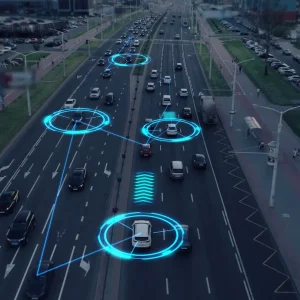Volkswagen Commercial Vehicles has approved Nempi, a new safety and fuel-saving device that claims to revolutionise telematics. James Dallas takes a look
Telemetry specialist Telemotion has developed what it claims is a groundbreaking system to cut fleet operating costs and promote safer driving through tapping directly into the van’s engine.
The driver performance and training system, Nempi, which is being trialled by Volkswagen, can be either factory- or retro-fitted. It works with the manufacturer’s controller area network (CANbus) – effectively the engine’s electronic nerve centre – to provide instant vehicle and driving style data to the driver, via an in-cab screen, and the fleet and service managers via a secure website. As a result of this sharing of information, Telemotion claims Nempi is not a ‘spy in the cab’ system.
Telemotion boss Seppo Hakkinen says the system development concentrated on driving skills, operating efficiency, road safety and fleet management. A key element is its “anticipation” factor, which gauges how safely and economically the driver is anticipating traffic situations by monitoring acceleration, braking and engine revs.
Not so simple
“Simply measuring fuel consumption is misleading,” Hakkinen explains. “It does not take into account traffic conditions, type of road, gradients, location, frequent stops and starts – a whole range of issues that affect running costs.” He says Nempi can be fitted by trained engineers at the manufacturer’s dealerships and the agreement with VW?means it does not affect warranties. Installation costs vary according to customer requirements but average about £1000 per van plus a subscription fee similar to those charged by other telematics firms to get the additional live feeds back to a computer while the van is being driven.
As well as improving driver behaviour, Hakkinen claims the wealth of mechanical information generated can pinpoint when vehicles need servicing far more accurately than on-board diagnostic (OBD) ‘black box’ systems. “We go into the engine and read minute details,” he says.
Although Volkswagen is the first brand to approve Nempi, Hakkinen claims the system can be applied to all commercial vehicles.
To illustrate the fuel-saving credentials of the Nempi system, Hakkinen took BusinessCar on two journeys in a Volkswagen Transporter on an identical 12-mile route consisting of motorway and A and B roads with a 600kg load, the driver and a passenger. The first time he drove “carelessly” and the second he paid attention to the live feedback from the in-cab screen. With just a 2mph difference in average speed (43mph compared with 41mph) the system recorded a 66% difference in fuel consumption in favour of the economical driving style.
The information Nempi generates is comprehensive, it includes fuel consumption (43mpg on the eco run vs 26mpg in this example), coasting distance (four miles miles/1.57 miles) and braking distance (0.6 miles/2.26 miles). It also gauges throttle, brake and gear usage skills, maximum deceleration and maximum revs per minute.
But it is in mixed driving conditions, with lots of speed changes, where the system comes into its own by training drivers to think ahead. On predictable motorway routes the lack of variation means it is less beneficial.
Through judging the strain put on the engine, the system anticipates when a service will be due – so, if a light commercial is driven carefully, the distance between workshop visits could potentially be lengthened. Another advantage is that the data compiled by the system can identify problems that are likely to need addressing. Let’s say the van has been subjected to harsh braking, then the dealership can then be notified in advance of the parts it will need, such as brake pads.
Gateway
Aware that the system would effectively be dead in the water if it invalidated the manufacturer warranty, Telemotion took it to Volkswagen where it underwent rigorous testing before gaining approval in September last year.
“Volkswagen is the toughest test so we can now approach every other LCV manufacturer,” says Hakkinen. He believes the gateway into the market is through getting manufacturer approval for the system, which will then find its biggest demand from high volume company van fleets.
“The driving force is the need to safeguard the working environment and to manage the use of vehicles for service and maintenance,” he says.
Hakkinen stresses that the main beneficiaries of Nempi from a safety and economical perspective are not professional drivers but those businesses for whom driving is a secondary activity, plumbers and electricians for example, who need vans to get staff and equipment to work places.
Hakkinen claims the system is unrivalled in its ability to show drivers, with live feedback, how they can improve through encouraging “predictive driving with anticipation”. It also supplies fleet managers with journey costs and gives them the data to “prove the good driving” habits of their staff.
Hakkinen says Nempi will rapidly recover the initial outlay on installation. He admits it costs more to fit than traditional on-board diagnostic devices but argues: “These don’t produce the right data. If you buy cheap what do you save?”





